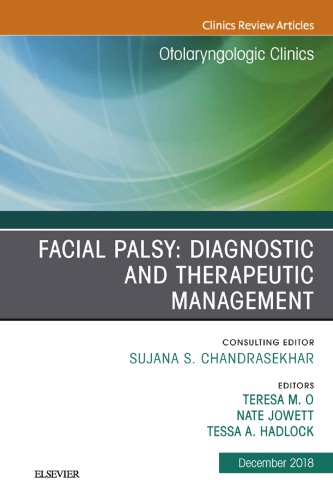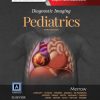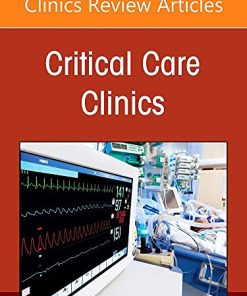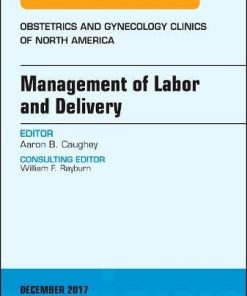Facial Palsy Diagnostic and Therapeutic Management An Issue of Otolaryngologic Clinics of North America Volume 51 6 1st Edition by Teresa O, Nate Jowett 0323642381 9780323642385
$50.00 Original price was: $50.00.$25.00Current price is: $25.00.
Facial Palsy: Diagnostic and Therapeutic Management, An Issue of Otolaryngologic Clinics of North America, Volume 51-6 1st Edition by Teresa O, Nate Jowett – Ebook PDF Instant Download/DeliveryISBN: 0323642381 9780323642385
Full download Facial Palsy: Diagnostic and Therapeutic Management, An Issue of Otolaryngologic Clinics of North America, Volume 51-6 1st Edition after payment.

Product details:
ISBN-10 : 0323642381
ISBN-13 : 9780323642385
Author : Teresa O, Nate Jowett
This issue of Otolaryngologic Clinics, guest edited by Drs. Teresa M. O, Nate Jowett and Tessa Hadlock, is devoted to Facial Nerve Paralysis: Causes, Prevention, Reanimation, and Rehabilitation. Articles in this outstanding issue include: The Importance and Psychology of Facial Expression; General Approach to Facial Palsy; Outcomes Tracking in Facial Palsy; Medical Management of Acute Facial Palsy; Surgical Management of Acute Facial Palsy; Management of Flaccid Facial Paralysis for Less than Two Years; Management of Long-Standing Flaccid Facial Palsy: Periocular Considerations; Management of Long-Standing Flaccid Facial Palsy: Midface/Smile – locoregional muscle transfer; Management of Long-Standing Flaccid Facial Palsy: Midface /Smile and Static Sling; Management of Long-Standing Flaccid Facial Palsy: Brow, Midface, and Lower Lip; Medical Management of Post-Paralysis Facial Palsy/Synkinesis; Surgical Management of Post-Paralysis Facial Palsy/Synkinesis; Management of Facial Nerve Schwannoma; Management of Vestibular Schwannoma: Otologic and Facial Nerve Considerations; and Management of Bilateral Facial Palsy. CME is also available for Otolaryngologic Clinics of North America.
Facial Palsy: Diagnostic and Therapeutic Management, An Issue of Otolaryngologic Clinics of North America, Volume 51-6 1st Table of contents:
The Importance and Psychology of Facial Expression
Key points
Introduction
Impact of facial paralysis from patient perspective
Summary
A General Approach to Facial Palsy
Key points
Introduction
History and physical examination
Investigations
Therapeutic management
Clinical outcomes
Summary
Outcome Tracking in Facial Palsy
Key points
Introduction
Patient-reported outcome measures
Clinician-graded scoring systems
Objective assessment tools
Novel outcome measures
Spontaneous smile assessment
Summary
Medical Management of Acute Facial Paralysis
Key points
History
Physical examination
Documentation
Outcome measures
Etiology of acute facial paralysis
Other acquired causes of acute facial paralysis
Malignant otitis externa
Pregnancy-associated Bell palsy
Tumors
Trauma
Iatrogenic causes
Metabolic
Vascular
Congenital (vascular)
Familial
Pediatric considerations
Bilateral facial paralysis
Acute recurrent facial paralysis
Diagnostic testing
Medical therapy for Bell palsy
Surgical Management of Acute Facial Palsy
Key points
Introduction
Surgical approach
Indications for surgical intervention
Description of surgery for acute facial paralysis
Postoperative care and potential complications
Summary
Management of Flaccid Facial Paralysis of Less Than Two Years’ Duration
Key points
Introduction
Evaluation and initial management of facial paralysis
Treatment planning
Surgical approaches to treatment of flaccid facial paralysis
Summary
Management of Long-Standing Flaccid Facial Palsy: Periocular Considerations
Key points
Introduction
Periorbital and ocular surface assessment
Periorbital and ocular surface management
Summary
Management of Long-Standing Flaccid Facial Palsy: Midface/Smile: Locoregional Muscle Transfer
Key points
Introduction
Biomechanics of muscle transfer
Principles of muscle tendon unit transfer
Muscle tendon unit selection
Suitable soft tissue bed
Flexibility of the oral commissure
Patient evaluation
Temporalis tendon transfer
Anatomy
Surgical technique
Gaining tendon length
Insertion site
Masseter muscle transfer
Anatomy
Surgical technique
Physiotherapy
Summary
Free Gracilis Transfer and Static Facial Suspension for Midfacial Reanimation in Long-Standing Flaccid Facial Palsy
Key points
Introduction
Indications
Surgical techniques
Technical and clinical pearls
Supplementary data
Management of Long-Standing Flaccid Facial Palsy: Static Approaches to the Brow, Midface, and Lower Lip
Key points
Introduction
Upper face
Midface
Lower face
Treating the contralateral face
Summary
Facial Rehabilitation: Evaluation and Treatment Strategies for the Patient with Facial Palsy
Key points
Introduction
Evaluation
Treatment
Special considerations
Chemodenervation
Rehabilitation for postsurgical dynamic facial reanimation
Nerve to masseter–driven smile
Facial rehabilitation following free muscle transfer driven by a cross-face nerve graft
Psychology of facial expression
Summary
Supplementary data
Surgical Management of Postparalysis Facial Palsy and Synkinesis
Key points
Introduction
Surgical procedure: modified selective neurectomy
Outcomes
Previously described techniques in surgical management
Summary
Supplementary data
Evaluation and Management of Facial Nerve Schwannoma
Key points
Background
Evaluation
Management
Summary
Management of Vestibular Schwannoma (Including NF2): Facial Nerve Considerations
Key points
Introduction to vestibular schwannoma
Clinical presentation
Diagnosis of vestibular schwannoma
Vestibular schwannoma management
Summary
Management of Bilateral Facial Palsy
Key points
Introduction
Causes of bilateral facial paralysis
Assessment of the patient with bilateral facial paralysis
Management of bilateral facial paralysis
Approach to free muscle transfer for smile in the patient with bilateral facial nerve paralysis
People also search for Facial Palsy: Diagnostic and Therapeutic Management, An Issue of Otolaryngologic Clinics of North America, Volume 51-6 1st:
medical treatment of facial palsy
clinical features of facial nerve palsy
clinical features of facial palsy
facial palsy differential diagnosis
facial palsy differential
Tags:
Facial Palsy,Diagnostic,Therapeutic Management,An Issue,Otolaryngologic,Clinics,North America,Teresa,Nate Jowett
You may also like…
Medicine - Pediatrics
Animals & Pets - Animal Care & Pets
Immunology and Vaccination, An Issue of Veterinary Clinics of North America: Small Animal Practice
Medicine
Emergency General Surgery, An Issue of Surgical Clinics, Volume 98-5 1st Edition Ronald Martin












